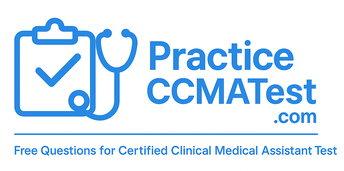Here, you will find your final Exercise, Practice CCMA Test 5, which contains 40 questions and is roughly 90% scenario-based. It was made to feel like the real CCMA exam.
These questions will ask you to integrate all of your practice, knowledge, communication, patient safety, and critical thinking. Think of this as your final practice and a chance to reflect on your confidence before your exam
40 Questions
Practice CCMA Test 5 is structured to ensure the strongest preparation outcome. Use this test to assess not only your preparedness but also the overall effectiveness of your preparation strategies. If you identify weaknesses, you can revisit earlier sections for review. Every step you’ve taken here has prepared you to walk into the exam with confidence.
